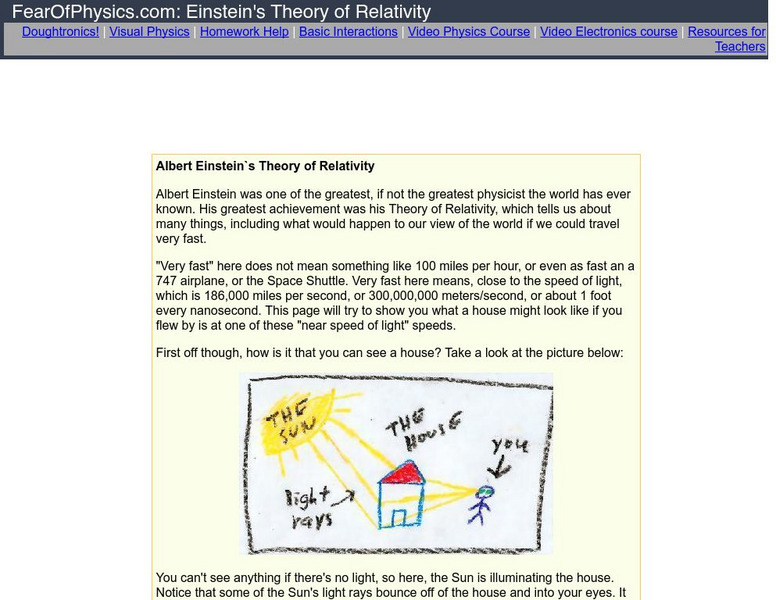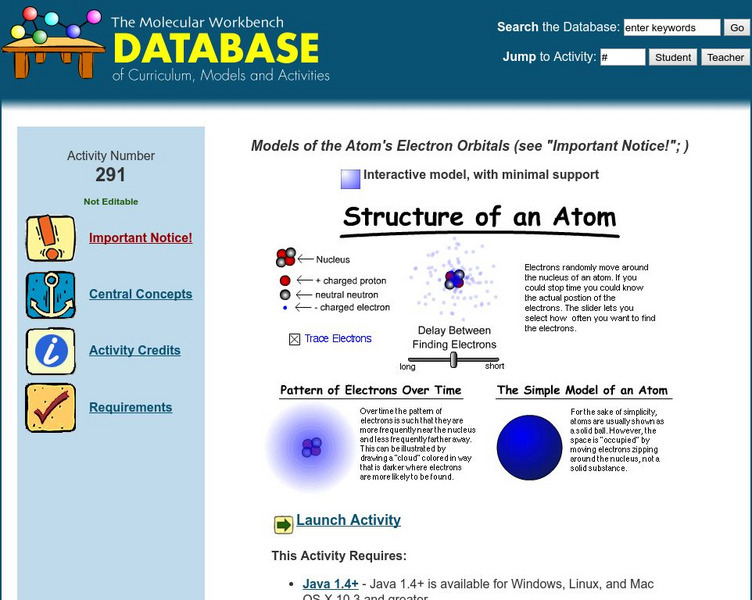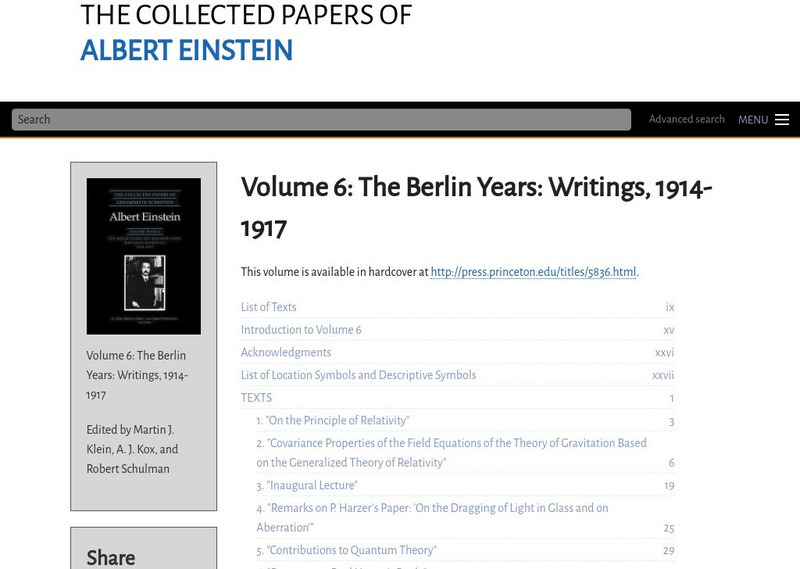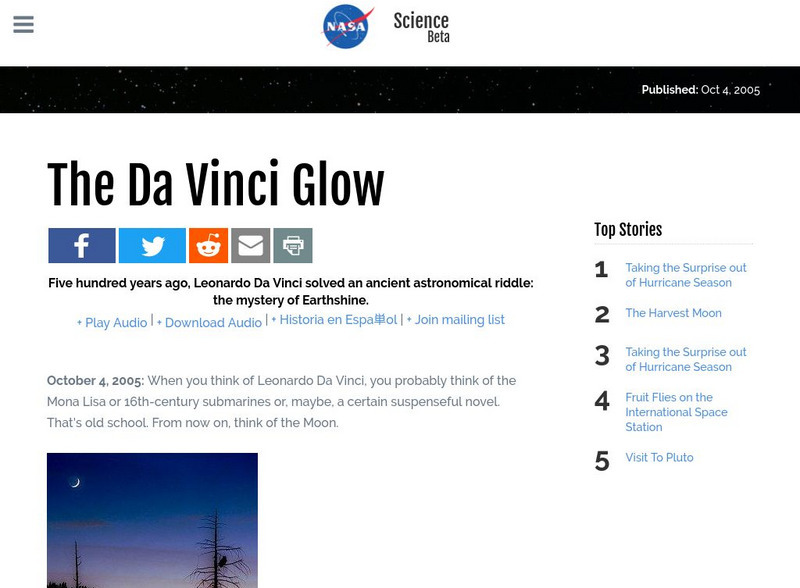Hi, what do you want to do?
Other
Artyfactory: Color in Art Color Theory Ii, "Color as Symbol"
Color theroy II, "Color as Symbol", from artyfactory ia an introduction to color theory in Art. This page provides an explanation of what each color is used to represent visually in art and what emotions each color represents.
CK-12 Foundation
Ck 12: Biology: Theory of Evolution Study Guide
Explore the evidence for the theory of evolution.
CK-12 Foundation
Ck 12: Life Science: 2.3 Cell Theory
Learn about the cell theory and levels of organization in a multicellular organism.
Other
Tone Savvy
You will find many free games that will help you develop your music theory knowledge. Learn rhythmic dictation, key signatures and intervals as well as several other topics concerning music theory.
Other
Fear of Physics: Albert Einstein's Theory of Relativity
Fear of Physics uses animations and simple language to teach the theory of relativity.
PBS
Wnet: Thirteen: Concept to Classroom :Tapping Into Multiple Intelligences
This site contains a wealth of information on Gardner's theory of multiple inteligences. It discusses what it consists of, the difference between it and the traditional definition of intelligence, how it has developed since its...
University of Nebraska Omaha
Uno Center for Economic Education: Great Economists and Their Times [Pdf]
Index of influential economists and leading schools of economic thought, 1750-1950. Includes brief biographical information, a timeline, and summaries of different economic theories of the time.
TED Talks
Ted: Ted Ed: How Big Is Infinity?
Explore the concept of infinity using the fundamentals of set theory in this animated video. [7:13]
Curated OER
Milton Friedman: A Profile
This profile of Milton Friedman includes a short biography plus hyperlinks to his works and theories.
NASA
Nasa: Space Place: What Is Science?
Students learn abut scientific investigation and the difference between hypotheses and theories.
Famous Scientists
Famous Scientists: Theodor Schwann
Learn about German Physiologist, Theodor Schwann, one of the scientists who helped develop the cell theory.
Other
Changing Minds: Actor: Observer Difference
This site provides an explanation of the actor/observer bias as a theory. Also provided is a small piece of information about research done to support the theory and also links to related information.
Other
Shadowlands: The Lost Colony of Roanoke, 1588
Presents five popular theories of what may have happened to the colonists at Roanoke. Useful as a starting point.
National Council of Teachers of Mathematics
The Math Forum: How Do You Find Prime Numbers?
This site explains prime number theory and how to find prime numbers.
Concord Consortium
The Molecular Workbench Database: Models of the Atom's Electron Orbitals
Learn about atomic structure and the multiple theories of atomic structure in this simulation.
Albright-Knox Art Gallery
Albright Knox Art Gallery: Painting an Impression
Impressionists used new methods of mixing colors based on contemporary scientific writings about optics. This lesson plan explores the theory of optical color mixing, painting the same subject under different conditions of light, and the...
Smithsonian Institution
Tween Tribune: If We Don't Need an Appendix, Why Is It There?
Article presents a theory regarding the role of the appendix in the human body.
University of Colorado
University of Colorado: Physics 2000: Bec: What Is It?
This is an understandable tutorial which guides the viewer through the innovations which led up to the verification of Bose-Einstein Condensation (BEC) in 1995. Follow the "Next," link at the bottom of the page to explore the following...
Princeton University
The Collected Papers of Einstein:volume 6: The Berlin Years: Writings, 1914 1917
A publication of Albert Einstein's written legacy presented in the original language version with in-depth English language annotation readers can access. This volume focuses on his life and work in Berlin.
Texas A&M University
Peer Curricula: Story Time: Thomas H. Huxley
A biography of the remarkable life of Thomas Huxley, who began his life in abject poverty, but through self-education and dedication, became a star in world science.
Other
Stadler: Systems Thinking the Means to Understanding Complexity
An article by Alexender Wenk who is Head Of Logistics at Stadler Rail. The focus is on business management approaches and how we need to incorporate systems thinking in order to successfully deal with all the complexities and challenges...
NASA
Nasa: The Da Vinci Glow
In the year 1510, Leonardo Da Vinci had an interesting theory to explain earthshine. While his theory was partially incorrect he was well before his time in establishing certain facts. Learn about Davinci's speculations and the...
University of California
Ucmp: Understanding Science: Dogs and Turnips
A simple lesson plan where each group of students turns over word cards creating sentences from them. As the student turns over more cards, the group modifies the meaning of the sentence, leading them to discuss how scientists change...
English for Everyone
Reading Comprehension Assessment: "Rio Grande" [Pdf]
Read Theory provides a free reading comprehension assessment that is designed for middle grade students. Four multiple choice questions and four extended response questions are included on this nonfiction reading assessment.
Other popular searches
- Number Theory
- Music Theory
- Atomic Theory
- Cell Theory
- Big Bang Theory
- Color Theory
- Economic Theory
- Music Theory Lesson Plans
- Theory of Evolution
- Germ Theory
- Continental Drift Theory
- Cell Theory Scientists






















